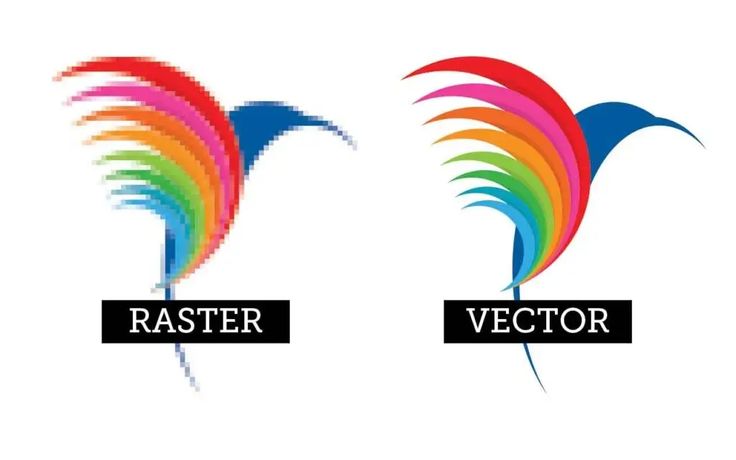Menu

When choosing the right graphic format for your digital projects, it's essential to understand the distinction between vector and raster graphics. Vector graphics are based on mathematical equations, allowing them to scale to any size without losing quality. This makes them perfect for designs that need to be resized frequently, like logos and icons. Raster graphics, on the other hand, are made up of individual pixels, which means they can lose quality when resized. Each format has its own set of strengths, and knowing when to use which one can have a significant impact on your design and SEO.
Vector graphics are created using mathematical equations that define lines, shapes, and colors. These graphics can be resized infinitely without losing quality, making them ideal for logos, icons, and illustrations that require scalability. Because they use algorithms instead of pixels, vector images are typically smaller in file size, making them faster to load and more efficient for web usage.
Key Benefits of Vector Graphics:
Scalability: No matter the size, vector graphics retain their crispness and detail.
File Efficiency: Smaller file sizes, especially for simple designs.
Perfect for Branding: Logos and icons are commonly created using vector graphics because they need to look sharp at any size.
Learn more about the benefits of vector graphics.
Raster graphics, also known as bitmap images, are made up of a grid of individual pixels. Each pixel contains color information, and the image's resolution is defined by the number of pixels. Unlike vector graphics, raster images lose quality when resized, especially when enlarged. Popular file formats like JPEG, PNG, and GIF fall under the raster category.
Key Benefits of Raster Graphics:
Rich Detail: Raster images are perfect for photographs or highly detailed artwork.
Texture and Depth: Due to the pixel-based nature, raster graphics capture complex shading and fine details.
Common for Photography: Most digital photographs are raster-based because they capture real-world textures.
Check out our detailed guide on raster vs. vector graphics.
The choice between vector and raster depends on the specific needs of your project. Here are some scenarios where each type of graphic excels:
Use Vector Graphics for:
Logos, icons, and illustrations that require scalability.
Print designs, such as business cards or brochures.
Web elements that need to adapt to multiple screen sizes without losing clarity.
Use Raster Graphics for:
Photographs, complex artwork, or detailed textures.
Websites or applications where high-resolution images are crucial.
Images with a lot of color variation or intricate details.
Explore more about how to choose the right graphics for your project.
Choosing between vector and raster graphics can significantly impact your digital projects. Vector graphics are perfect for logos and scalable designs, while raster graphics shine in detailed images like photos. Understanding the strengths and weaknesses of each will help you make informed decisions for your design needs. Whether you’re working on a website, a brand identity, or a print ad, choosing the right graphic type will enhance your project’s success. To learn more about high-quality vector solutions for your projects, visit SeekVector.